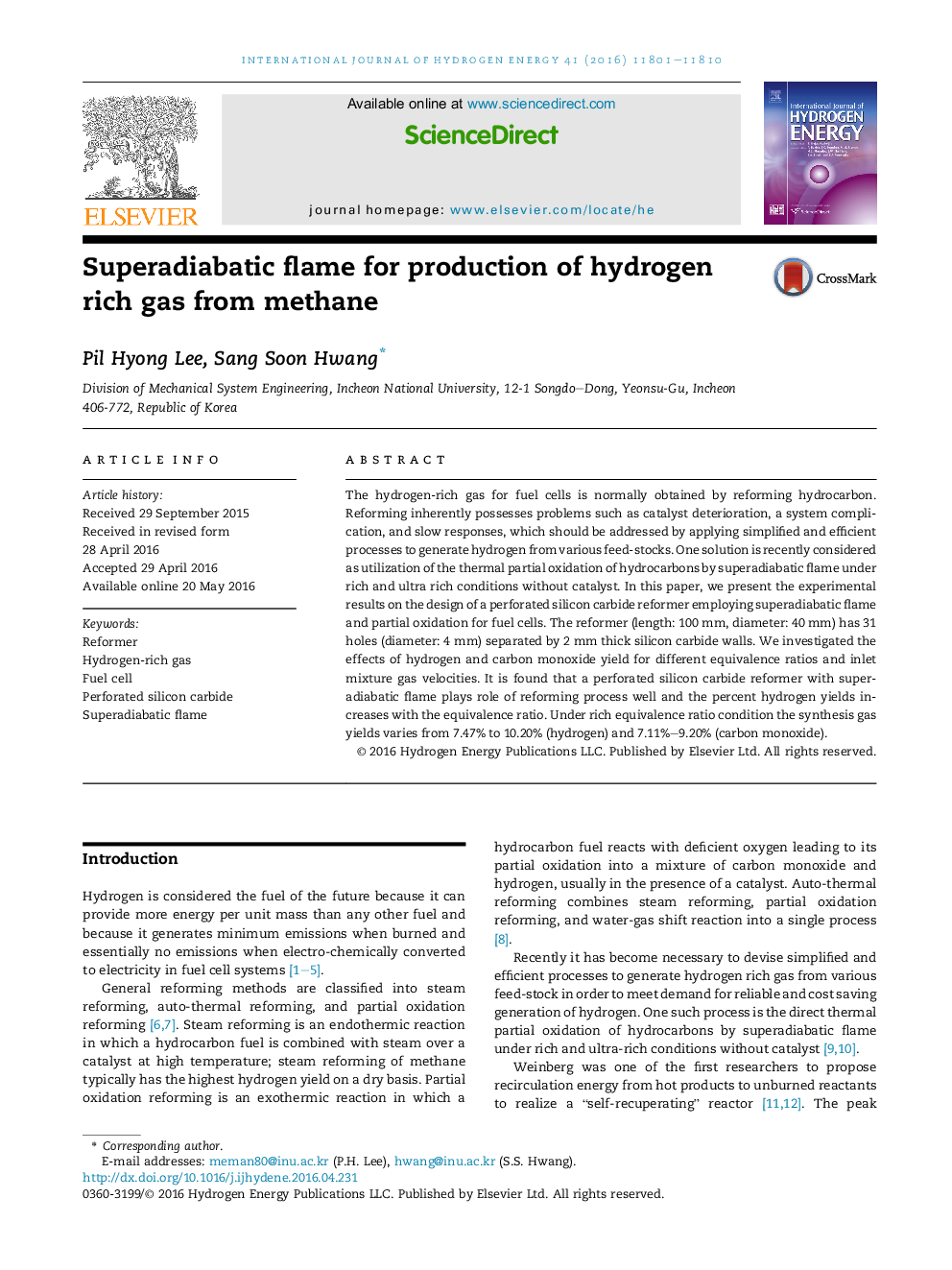| Article ID | Journal | Published Year | Pages | File Type |
|---|---|---|---|---|
| 1268512 | International Journal of Hydrogen Energy | 2016 | 10 Pages |
•Hydrogen rich gas production by superadiabatic flame.•Effect of equivalence ratio and inlet velocity were analyzed.•Conversion efficiency from the methane.•Non catalytic reformer to production of hydrogen rich gas was confirmed in this study.
The hydrogen-rich gas for fuel cells is normally obtained by reforming hydrocarbon. Reforming inherently possesses problems such as catalyst deterioration, a system complication, and slow responses, which should be addressed by applying simplified and efficient processes to generate hydrogen from various feed-stocks. One solution is recently considered as utilization of the thermal partial oxidation of hydrocarbons by superadiabatic flame under rich and ultra rich conditions without catalyst. In this paper, we present the experimental results on the design of a perforated silicon carbide reformer employing superadiabatic flame and partial oxidation for fuel cells. The reformer (length: 100 mm, diameter: 40 mm) has 31 holes (diameter: 4 mm) separated by 2 mm thick silicon carbide walls. We investigated the effects of hydrogen and carbon monoxide yield for different equivalence ratios and inlet mixture gas velocities. It is found that a perforated silicon carbide reformer with superadiabatic flame plays role of reforming process well and the percent hydrogen yields increases with the equivalence ratio. Under rich equivalence ratio condition the synthesis gas yields varies from 7.47% to 10.20% (hydrogen) and 7.11%–9.20% (carbon monoxide).
